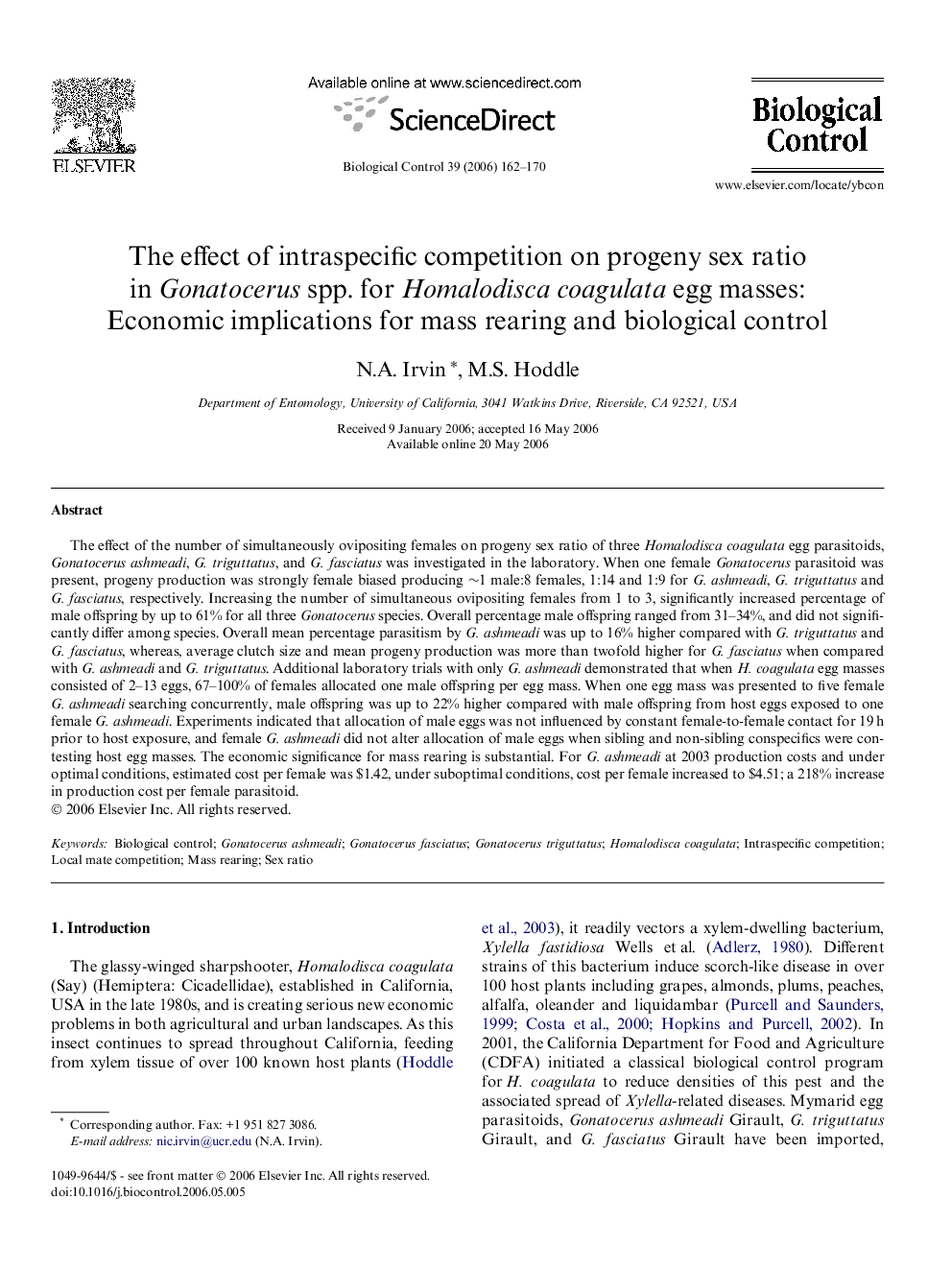| Article ID | Journal | Published Year | Pages | File Type |
|---|---|---|---|---|
| 4505253 | Biological Control | 2006 | 9 Pages |
The effect of the number of simultaneously ovipositing females on progeny sex ratio of three Homalodisca coagulata egg parasitoids, Gonatocerus ashmeadi, G. triguttatus, and G. fasciatus was investigated in the laboratory. When one female Gonatocerus parasitoid was present, progeny production was strongly female biased producing ∼1 male:8 females, 1:14 and 1:9 for G. ashmeadi, G. triguttatus and G. fasciatus, respectively. Increasing the number of simultaneous ovipositing females from 1 to 3, significantly increased percentage of male offspring by up to 61% for all three Gonatocerus species. Overall percentage male offspring ranged from 31–34%, and did not significantly differ among species. Overall mean percentage parasitism by G. ashmeadi was up to 16% higher compared with G. triguttatus and G. fasciatus, whereas, average clutch size and mean progeny production was more than twofold higher for G. fasciatus when compared with G. ashmeadi and G. triguttatus. Additional laboratory trials with only G. ashmeadi demonstrated that when H. coagulata egg masses consisted of 2–13 eggs, 67–100% of females allocated one male offspring per egg mass. When one egg mass was presented to five female G. ashmeadi searching concurrently, male offspring was up to 22% higher compared with male offspring from host eggs exposed to one female G. ashmeadi. Experiments indicated that allocation of male eggs was not influenced by constant female-to-female contact for 19 h prior to host exposure, and female G. ashmeadi did not alter allocation of male eggs when sibling and non-sibling conspecifics were contesting host egg masses. The economic significance for mass rearing is substantial. For G. ashmeadi at 2003 production costs and under optimal conditions, estimated cost per female was $1.42, under suboptimal conditions, cost per female increased to $4.51; a 218% increase in production cost per female parasitoid.
